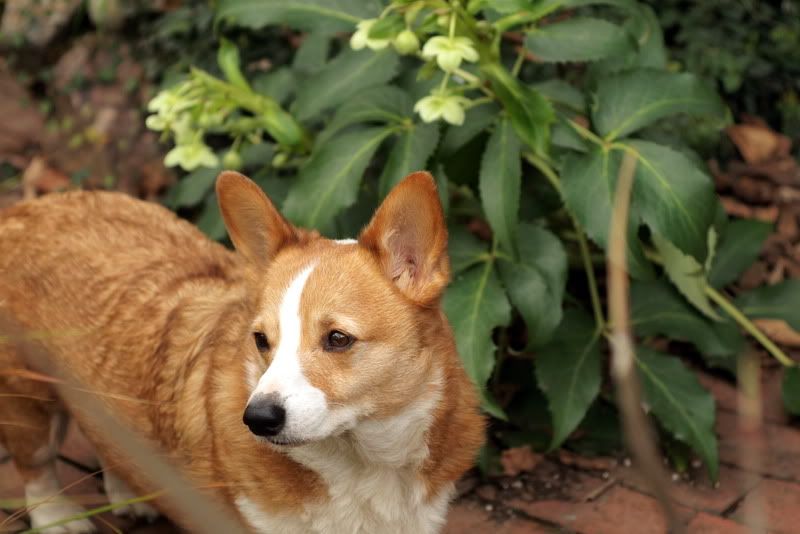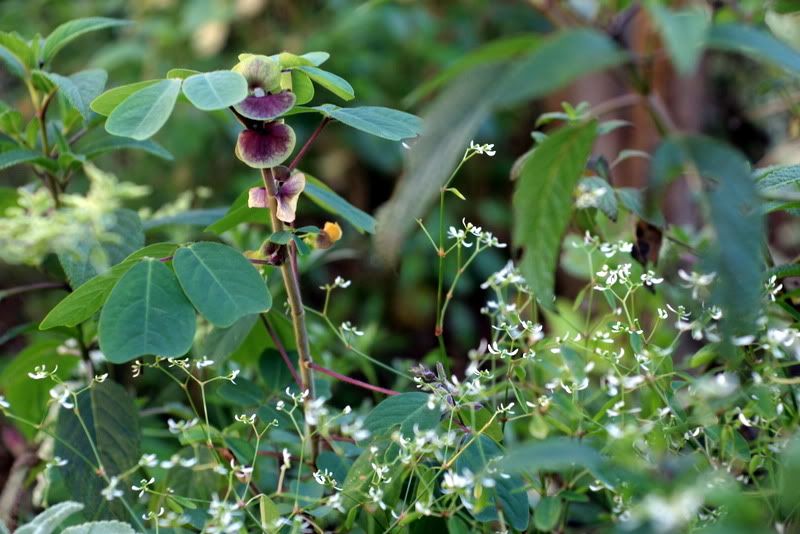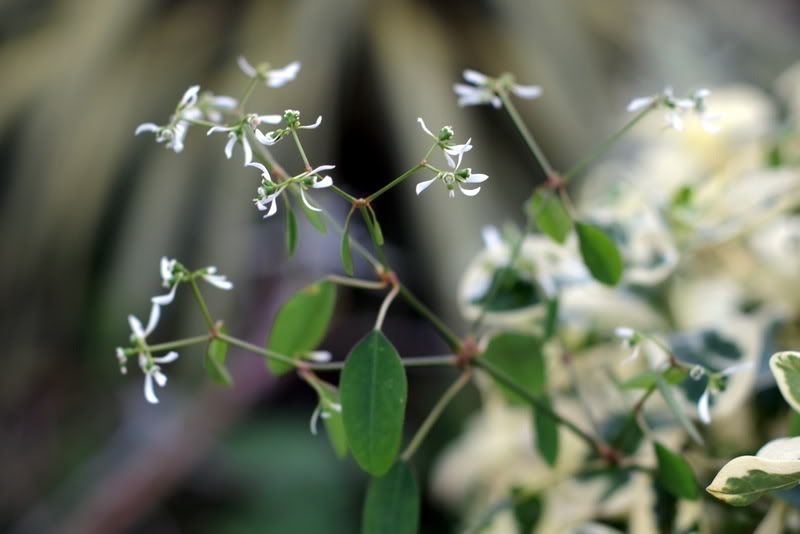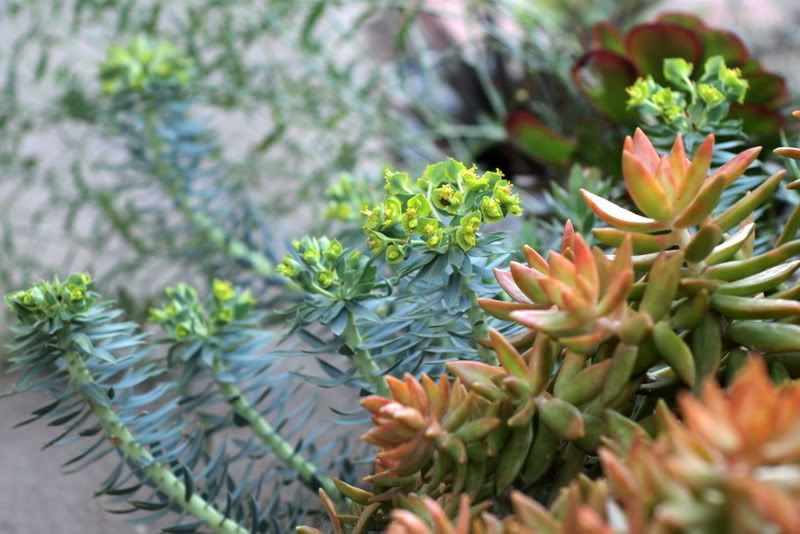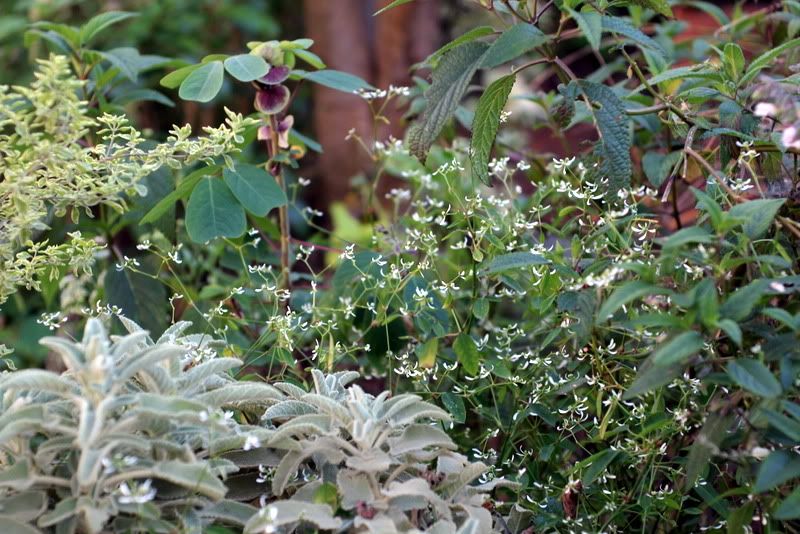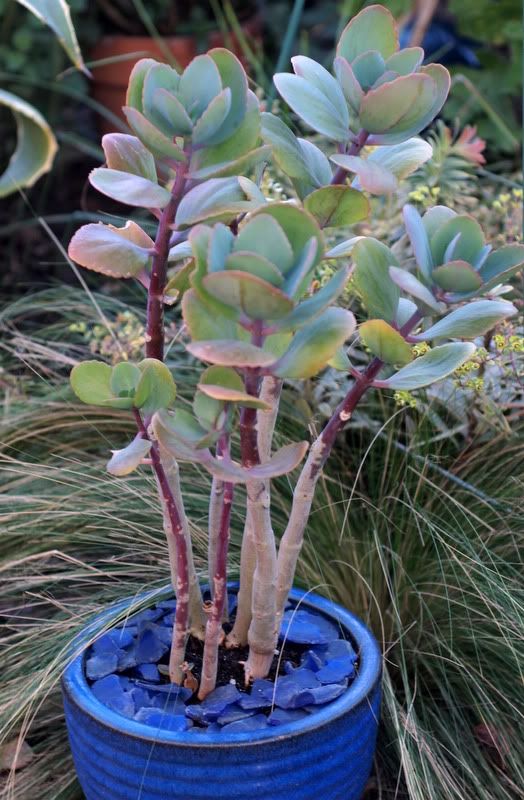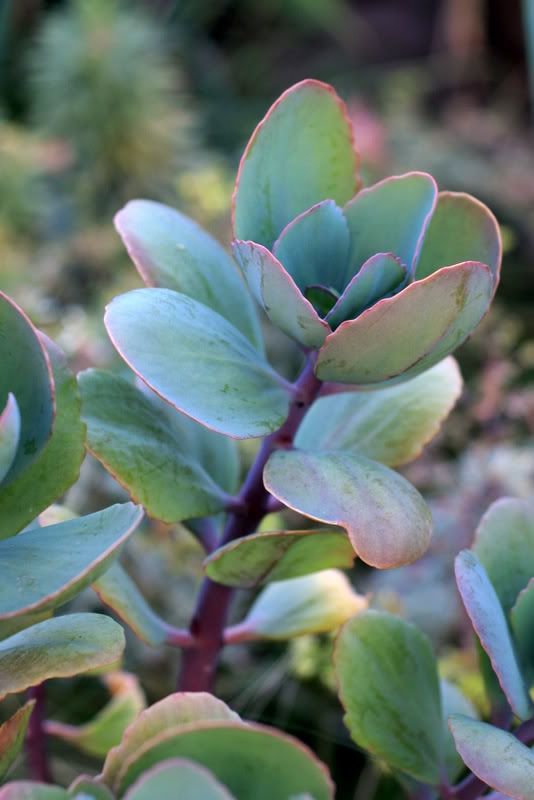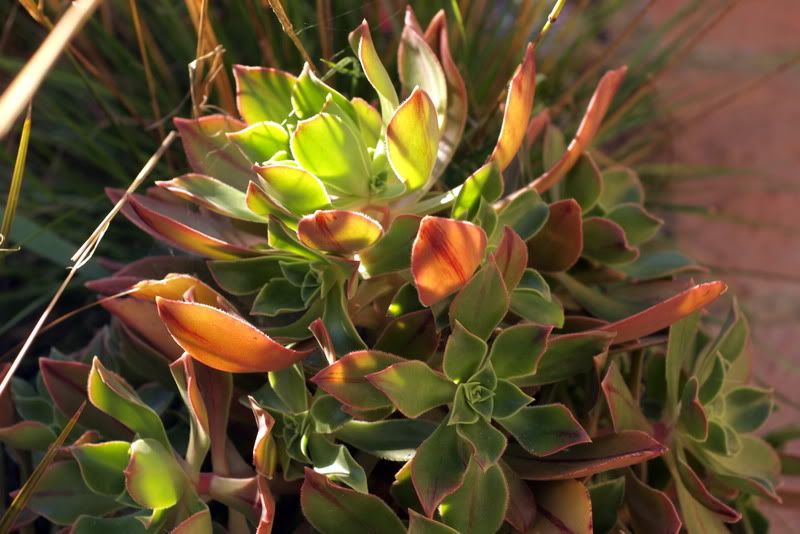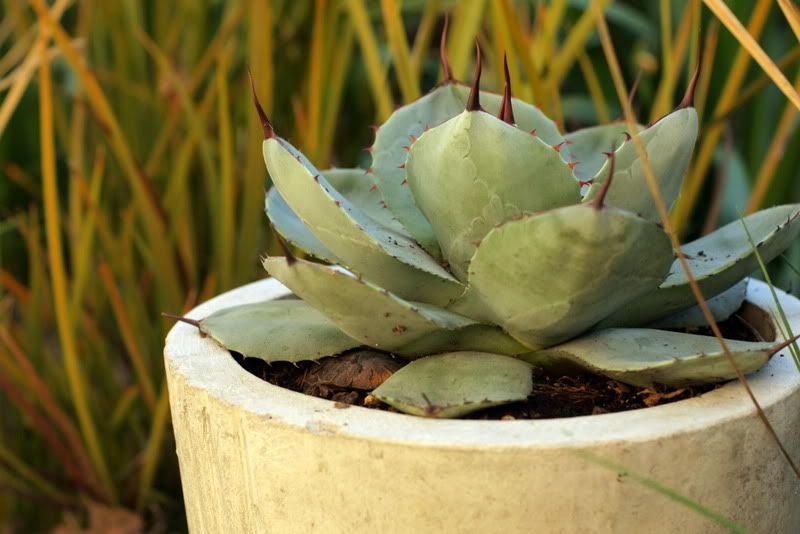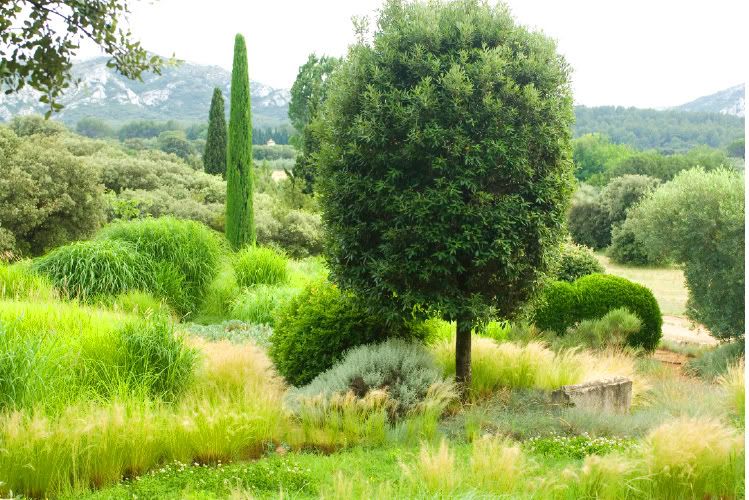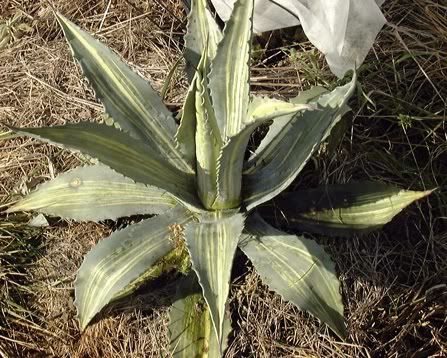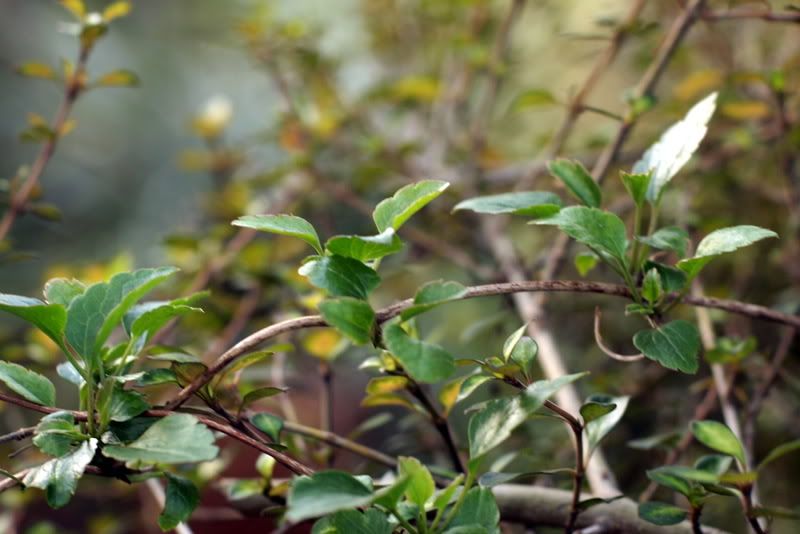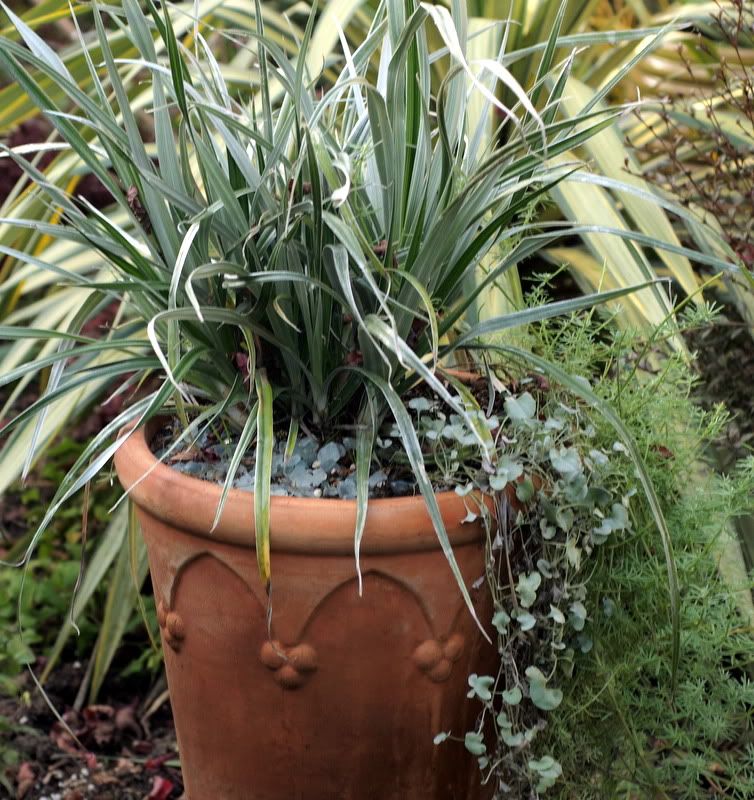The camera battery charger has been annoyingly misplaced and a new one finally ordered, but it was several l-o-n-g days in coming, at last arriving late afternoon yesterday. At first light I was up, camera in hand, heading straight across the street to take some photos of Holly’s front garden. Her garden intrigues me, for so many reasons. The fact that I encouraged her to do it, just ditch the lawn and go for it, initially had me feeling a little queasy should it end in failure. But what Holly has accomplished has me now regularly gazing over her fence, analyzing the amazing textural drifts she’s achieved. Now we’ve come full circle, and I’m the one begging for cuttings from her garden.
Yesterday I swooned over this Crassula multicava, the blurry foaming sprays of pink-white flowers in the center, and took home a rooted cutting. Yes, swooning does get you cuttings. The little crassula in bloom reminds me of a rare saxifrage:
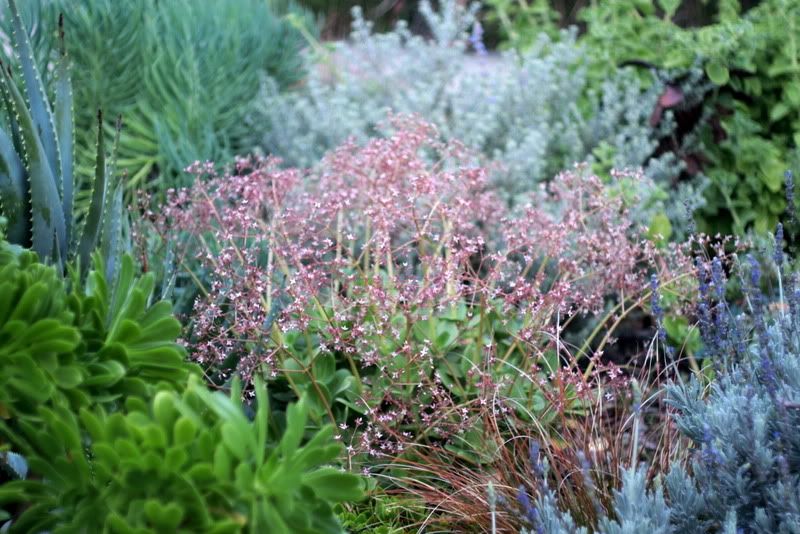
Some of my plants have ended up in Holly’s garden, but she also has a mysterious source from her workplace. It’s all a little vague, but cuttings and plants seem to be coming from a healing garden made on the grounds of a hospital. The elderly gardener has taken a shine to our darling Holly (who wouldn’t?) and given her some amazing plants, some kept as specimens in pots in her back garden — (not really a garden yet.)
It occurred to me yesterday that the brilliant success Holly has made of her almost 2-year-old, lawn-to-succulents front garden can be attributed to a couple things besides her great design eye and strong work ethic, though those two traits are certainly handy, if not indispensable.
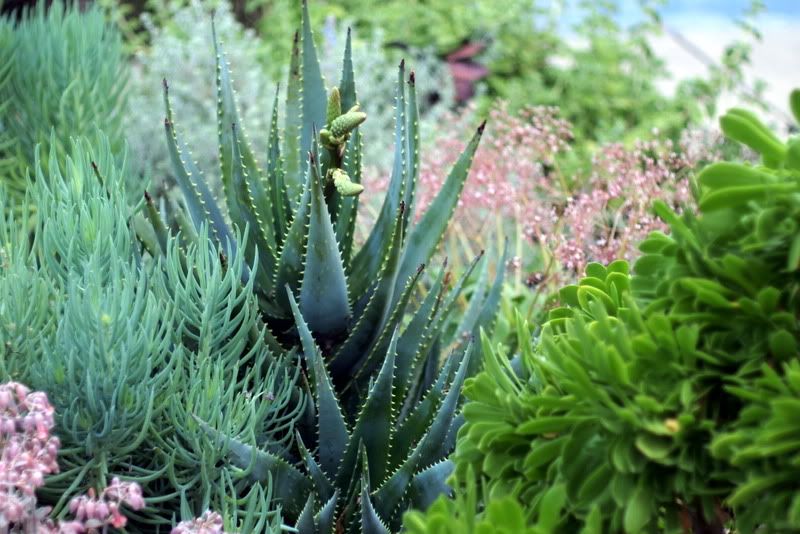
As a result of Holly’s innate frugality, and probably because the garden started out as an experiment, the succulents in her garden have pretty much all been gifts. She can’t tell you their names and hasn’t been hit yet, mercifully, by collector-mania, so hasn’t succumbed to dotting in one of this and that. Where she spent the money was on tough littlle shrubs, like lavenders, osmanthus, and westringias, that protected the tiny succulent cuttings while they gained size, but these shrubs also really calm and unify the plantings. There’s a couple clumps of a rambunctious plectranthus that have outlived their usefulness in this regard and really need to be yanked, but their early and strong evergreen presence was a great addition while the garden grew in, and she made sure it didn’t overrun other plants. The plectranthus can be seen in this photo fronting westringia, with the red leaves of the African Milk Bush, Euphorbia bicompacta var. rubra, leaning on the birdbath. Holly has no cats, so this little birdbath is strictly standing-room only, with birds pushing each other off the edge for water rights.
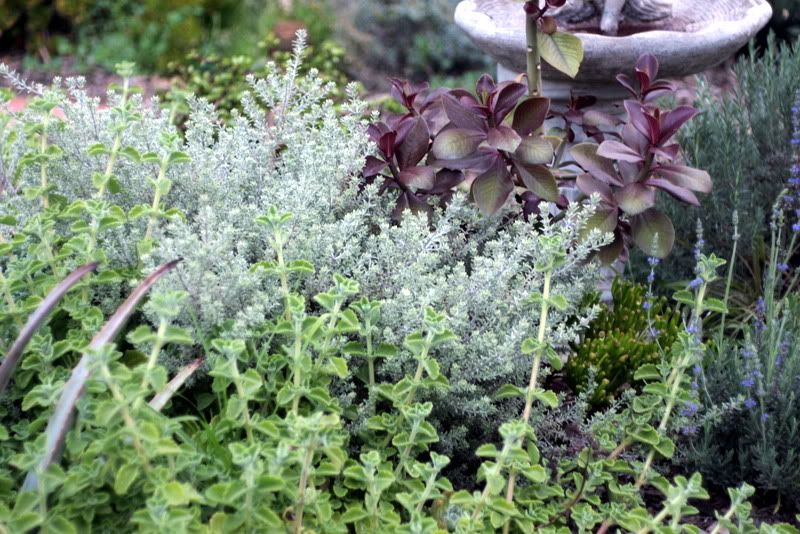
Bella, her enormous and devoted German shepherd, carefully follows the simple large paths around the planting beds while Holly meticulously weeds and cares for the garden. In contrast to the old days of romping on the lawn, Bella has transitioned to the paths beautifully, and since Bella is walked frequently she doesn’t lack for exercise. (As is often the case, the former patches of lawn, though thirsty, were tiny, merely token gestures to a greensward.) Fragile succulents are tucked safely in amongst larger plants. I admired Holly’s huge green aeoniums yesterday. “What are they again?” she asked. A-e-o-n-i-u-m-s. I so admire Holly’s fearlessness, her spirit of trial-and-error, learning as she goes.
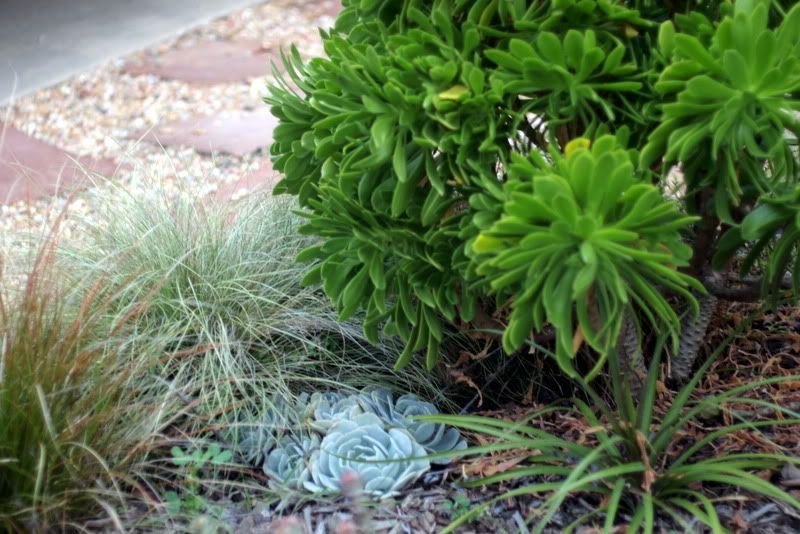
What really got my attention were the swathes of blooms from the Crassula multicava mentioned above and this Kalanchoe fedtschenkoi shown in flower below backed by blue-green Senecio vitalis. So often succulent plantings focus on the geometric leaf patterns at ground level, but the textural drifts from the kalanchoe’s flower sprays had a filmy effect similar to that of small grasses, with flowers dangling like the lockets of Job’s tears/Coix lacryma-jobi. I didn’t get closeups of the blooms, taking photos at a distance over the fence, but I think that’s another strength of Holly’s garden, the use of simple succulents planted en masse. A lot of us were introduced to succulents via Thomas Hobb’s intricate “pizza” concept, fun and useful for containers, but for landscapes large swathes are where the drama is.
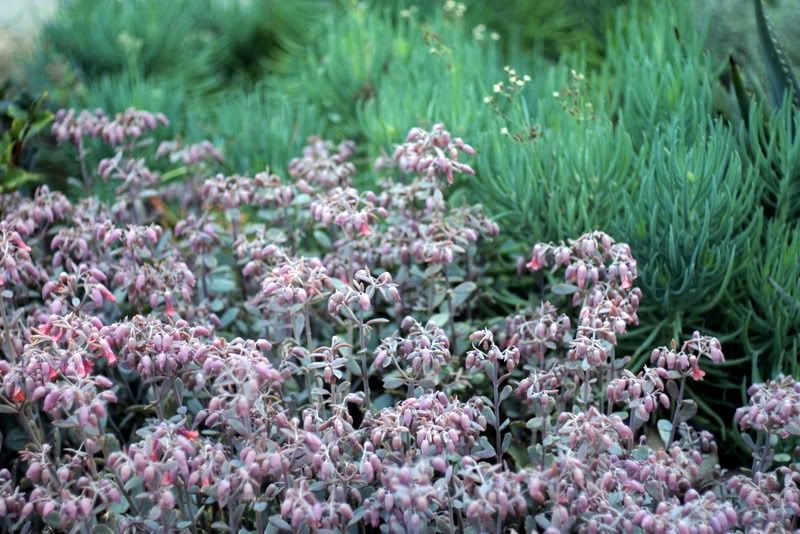
Holly offered, so I grabbed a cutting of the Kalanchoe fedtschenkoi. I’ve grown this succulent in containers, but seeing it blooming in generous sweeps in the landscape was a revelation, courtesy of Holly’s fabulous little garden. These two succulents in bloom gave the plantings a looser, more relaxed quality not often achieved with succulents.

That she’s smitten with the little garden and has moved far beyond the original impetus to just replace the lawn is thrilling to behold. And now I get to cop the occasional cutting from Holly’s garden. I wish my neighborhood had six more Hollies.

